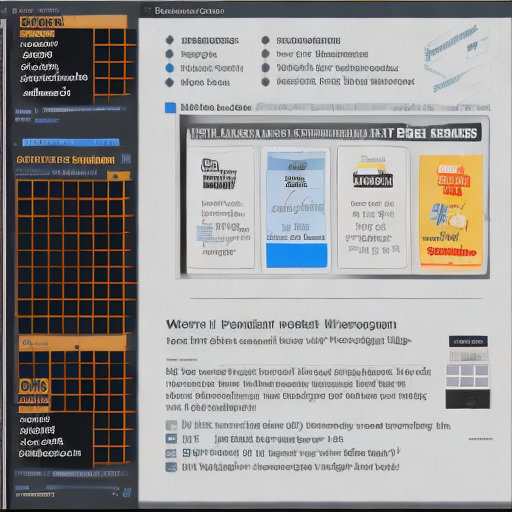Prototyping: A Guide to Rapid Product Development
Rapid Product Development using Prototyping
Prototyping is an essential step in product development, allowing stakeholders to test and refine a product idea before investing in the full-scale production. It is a crucial part of the product development process, as it allows for faster innovation, more efficient development, and better user experiences. This guide will provide an overview of what prototyping is, the benefits of prototyping, the different types of prototypes, the steps of prototyping, and the tools and techniques used to create prototypes.
What is Prototyping?
Prototyping is a process of creating a basic model of a product, service, or system. It allows stakeholders to test out an idea or concept in a low-risk and cost-effective way. It is used to collect feedback from users and stakeholders, refine the product, and make sure it meets user needs. Prototyping is an iterative process, meaning that it is constantly refined and improved based on user feedback and testing.
Benefits of Prototyping
Prototyping has many advantages for product development. It allows stakeholders to test out their ideas and get feedback from users before investing in the full-scale production. It also helps to identify any potential problems with the product before it is released to the public. Prototyping can save time and money by allowing stakeholders to refine their product before investing in the full-scale production. Additionally, prototyping can help to reduce risk and improve user experience by allowing stakeholders to test out their product and get feedback from users.
Types of Prototypes
There are several different types of prototypes that can be used in product development. Low-fidelity prototypes are simple models that are used to test out ideas and concepts. These prototypes are usually created quickly and cheaply, and are used to get an early idea of what the product will look like. High-fidelity prototypes are more complex models that are used to test out the full product. These prototypes are usually more detailed and are used to test out the full product before it is released.
Steps of Prototyping
Prototyping is a multi-step process that involves several different steps. The first step is to define the product or service. This involves gathering information from stakeholders about the product and creating a plan for the prototype. The second step is to create the prototype. This involves using tools and techniques to create a prototype that meets the needs of stakeholders. The third step is to test the prototype. This involves gathering feedback from users and stakeholders about the prototype and making any necessary changes. The fourth step is to refine the prototype. This involves making changes to the prototype based on user feedback and testing.
Tools for Prototyping
There are several different tools and techniques that can be used to create prototypes. These include wireframing tools, prototyping tools, and coding tools. Wireframing tools are used to create basic models of the product. Prototyping tools are used to create more detailed models of the product. Coding tools are used to create a fully functional prototype.
User Testing
User testing is an essential part of prototyping. It allows stakeholders to get feedback from users about the prototype and make any necessary changes. User testing can be done in person or online. In-person user testing involves gathering user feedback through interviews and focus groups. Online user testing involves gathering feedback through surveys, polls, and other methods.
Iterative Prototyping
Iterative prototyping is a process of refining the prototype based on user feedback and testing. It involves making changes to the prototype based on user feedback and testing, and then repeating the process until the prototype meets the needs of stakeholders. Iterative prototyping is an important part of the product development process, as it allows stakeholders to refine their product and make sure it meets user needs.
Analyzing Results
Once the prototype has been tested, it is important to analyze the results. This involves looking at the user feedback and testing results to identify any potential problems with the prototype. It also involves looking at the data to identify any areas for improvement. Analyzing the results of the prototype can help stakeholders to make informed decisions about the product and make any necessary changes.
Refining the Prototype
Once the results of the prototype have been analyzed, it is important to refine the prototype. This involves making changes to the prototype based on user feedback and testing results. It also involves making any necessary improvements to the product to ensure it meets user needs. Refining the prototype is an essential part of the product development process, as it allows stakeholders to make sure their product meets user needs.
Documentation
Documentation is an important part of the prototyping process. It involves creating documents that describe the prototype and its features. Documentation can include user stories, diagrams, flowcharts, and other documents. Documentation is important for stakeholders to understand the prototype and its features, as well as for users to understand how to use the product.
Presenting the Prototype
Presenting the prototype is an important part of the product development process. It involves demonstrating the prototype to stakeholders and users. Presenting the prototype allows stakeholders to get an idea of what the product will look like and how it will work. It also allows users to get an idea of how the product will work and provide feedback on the product.
Adopting Rapid Product Development
Rapid product development is a method of quickly creating and testing prototypes. It involves creating a prototype quickly and testing it with users to get feedback. Rapid product development allows stakeholders to quickly test out their ideas and get feedback from users before investing in the full-scale production. It also allows stakeholders to make changes to the product quickly and efficiently, so they can get the product to market faster.
To sum Prototyping Up
Prototyping is an essential part of the product development process, allowing stakeholders to test out their ideas and get feedback from users before investing in the full-scale production. It involves creating a basic model of the product and then refining it based on user feedback and testing. Prototyping has many advantages, including faster innovation, more efficient development, and better user experiences. There are several different tools and techniques that can be used to create prototypes, and user testing is an essential part of the prototyping process. Rapid product development is a method of quickly creating and testing prototypes, allowing stakeholders to get their product to market faster.








